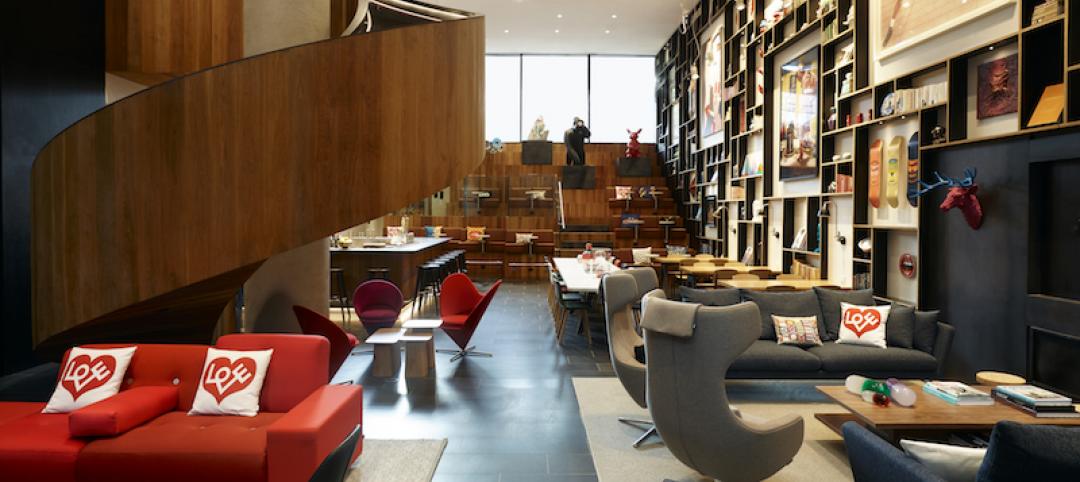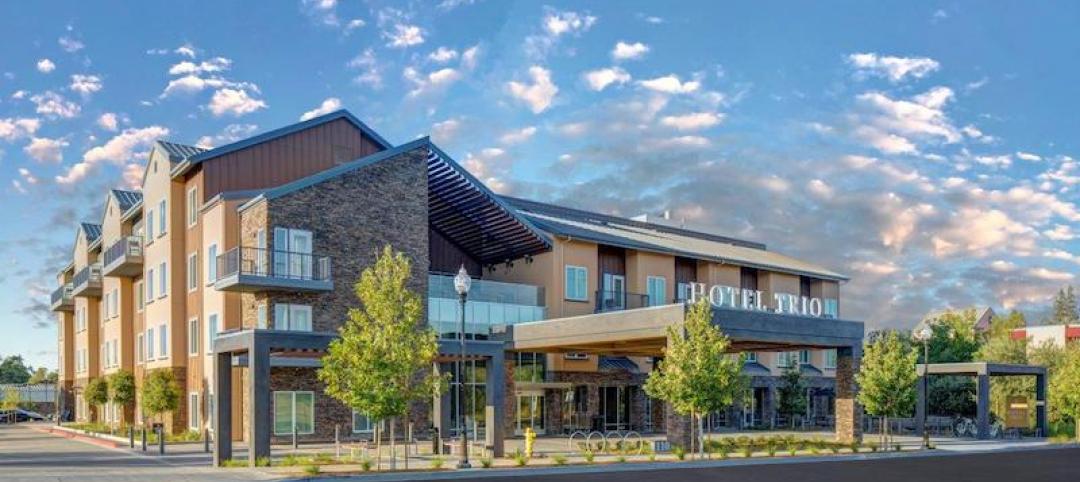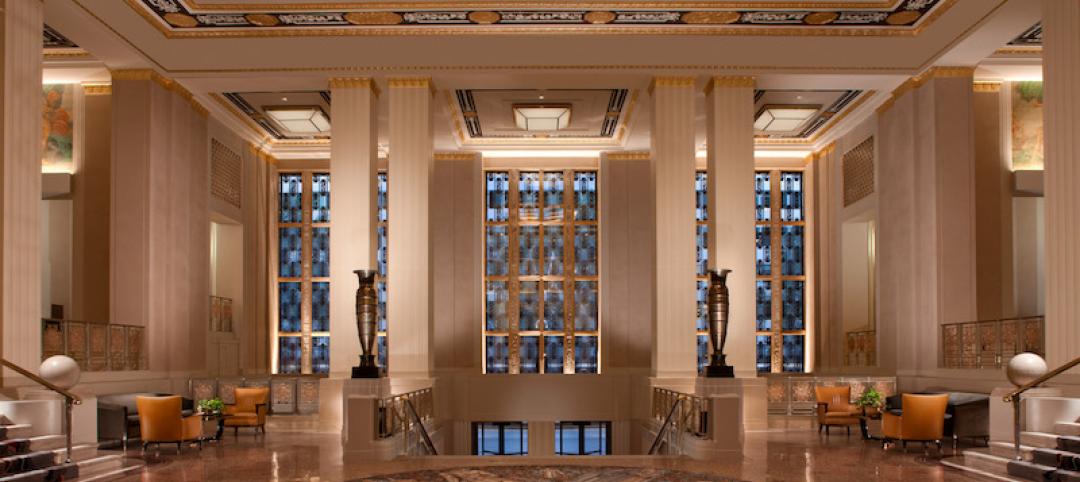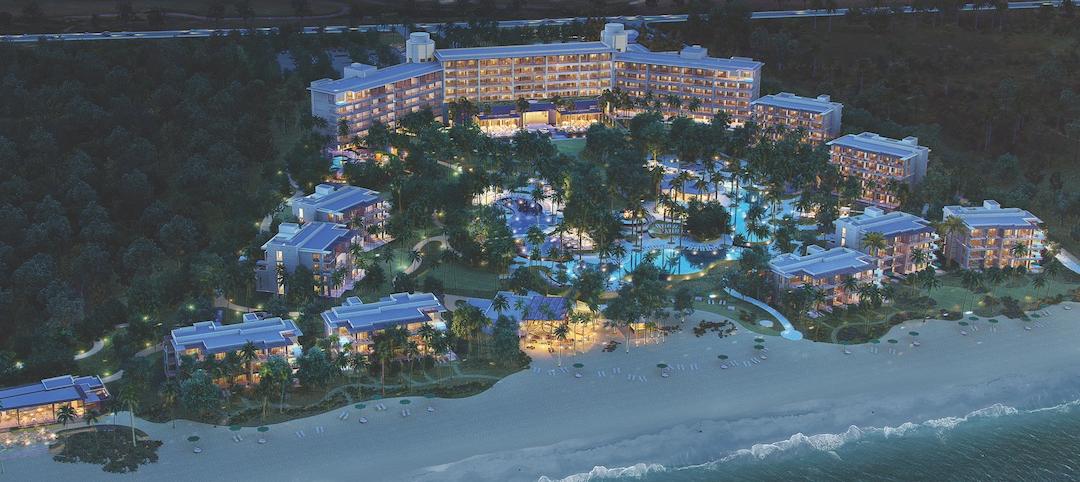A hotel development in Miami is the beneficiary of a decision by the U.S. Congress to extend a program that allows foreign nationals to apply for visas if they invest $500,000 to $1 million in job-creating ventures in the U.S.
That EB-5 Regional Center Program was supposed to expire on Sept. 30, but now will live on through Dec. 11 with a possibility of being reapproved for a longer stint.
The South Florida Business Journal reports that Florida East Coast Realty, the developer behind the 83-story Panorama Tower project in Miami, will now be allowed to accept visa applications with a goal of raising about 6% of the tower’s $800 million in costs from visa recipients.
The developer is funding this project, and expects to receive the EB-5 money around the time that Panorama receives its certificate of occupancy in late 2017.
Panorama will have 821 apartments, 208 hotel rooms, 100,000 sf of medical office space, 50,000 sf of retail and restaurant space, and a 2,000-car parking garage. Nineteen of its stories have already been erected. When completed, it will be the tallest hotel tower in Florida, at least temporarily.
The EB-5 Visa Project for Immigrant Investors dates back to 1990, with the Regional Center program following three years later. Under current law, around 10,000 EB-5 visas are available per year, according to the National Real Estate Investor (NREI).
The Hospitality sector and its representatives obviously would like to see EB-5 extended beyond this year, even as traditional capital has lately become more accessible for this sector’s projects. “Today, hotel developers seek EB-5 capital today primarily for its pricing advantage,” reports NREI, which states that new hotel construction is probably the most popular type of investment today in the EB-5 market.
Earlier this month, The Global Hospitality Group of the Los Angeles-based law firm Jeffer Mangels Butler & Mitchell disclosed that it had recently closed $350 million in EB-5 financing for its developer clients. In total the firm says it has sourced more than $700 million in EB-5 financing (it didn’t state over how many years), and expects that program to be “an important source of funding for qualified projects” in the future.
The New York law firm Rosenberg & Estis closed seven EB-5 construction mezzanine loans totaled $1 billion last year, including a $200 million loan for a mixed-use hotel project in New York City’s Times Square.
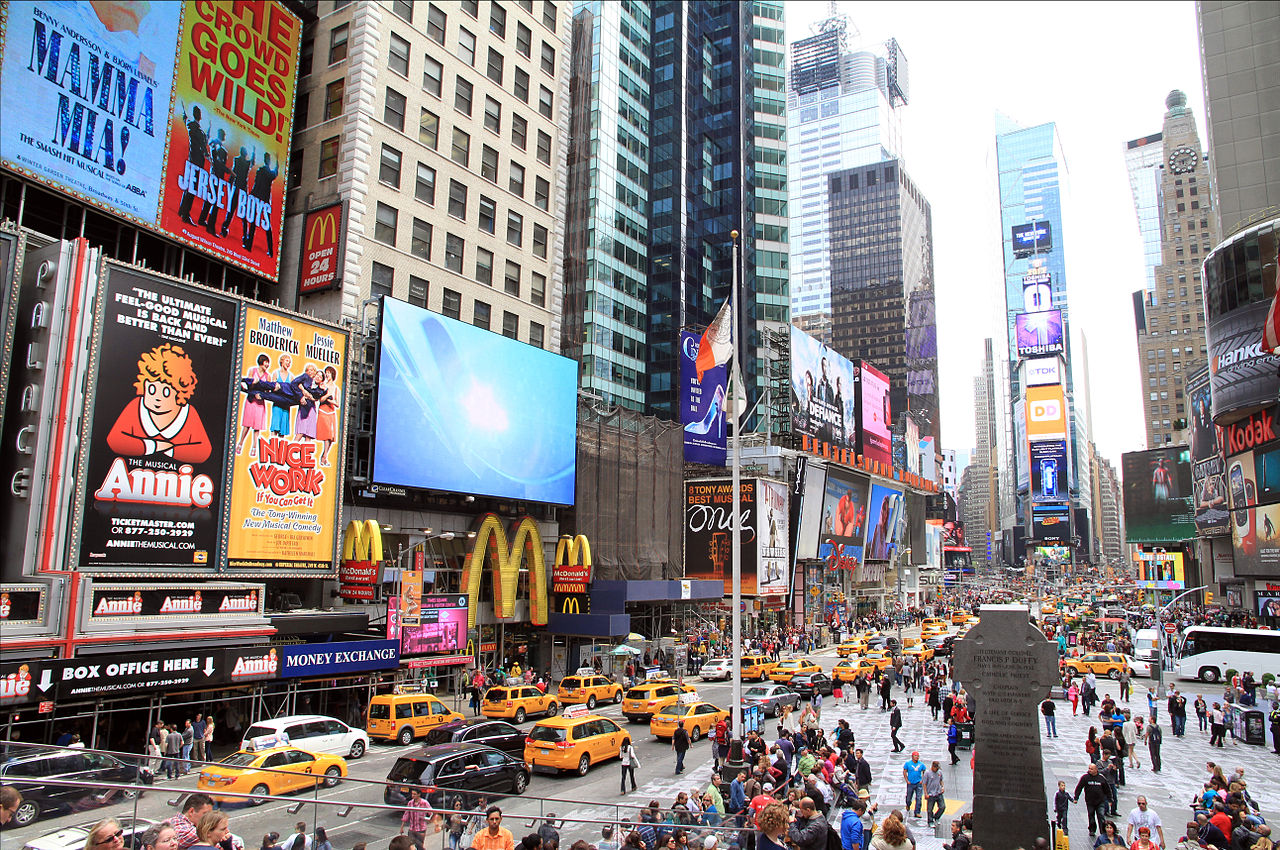
Congress decided to extend this program around the same time that the Bipartisan Policy Center (BPC) released a study that chronicles EB-5’s successes and failures.
The report notes that the number of visas issued through this program grew to 10,692 in 2014, from 1,360 in 2008. Estimates vary as to how much total investment capital this program has raised, ranging from $1 billion (the Government Accountability Office) to $10 billion (the U.S. Customs and Immigration Service).
The report notes that the Regional Center Program has its share of problems over the years, including lax oversight, high-profile cases of fraud, and allegations of corruption and mismanagement. “Nonetheless, the program has worthwhile goals and potential that have already provided positive benefits and could continue to do so with appropriate reforms.”
BPC estimates that the program since its inception has attracted “a minimum total of $4.2 billion in investments and supported the creation of at least 77,150 jobs.” BPC also notes that state and local government interest in the Regional Center Program is growing. “In Philadelphia alone, public-private partnerships with regional centers have attracted more than $620 million in investments for now completed projects,” says the report.
Related Stories
Modular Building | Oct 12, 2018
DeSimone Consulting Engineers designs the tallest modular hotel in the United States
The hotel was originally designed as a cast-in-place concrete structure.
Mixed-Use | Oct 4, 2018
Four-story hotel and adjacent affordable housing community opens in California’s Sonoma County
Axis/GFA Architecture and Design was the architect for the project.
Reconstruction & Renovation | Aug 21, 2018
The massive facelift of New York’s famed Waldorf Astoria moves into Phase Two
The refurbished hotel will feature fewer, but larger, guest rooms.
Hotel Facilities | Aug 10, 2018
How hospitality design makes spaces of all types better for users
Responding to these shifting expectations, building owners and design teams working in other markets now regularly embrace leading ideas from the world of hospitality and infuse them into their projects.
Hotel Facilities | Aug 1, 2018
'Home away from home' is hoteliers' newest theme
Creating an experience, with the accent on local color, is flavoring hotel design.
Mixed-Use | Jul 17, 2018
Water Street Tampa’s developer reveals details about this project’s public spaces
This $3 billion waterfront neighborhood will also include three hotels.
Sponsored | Hotel Facilities | Jul 13, 2018
Hotel renovation: More than just minding the dust
Do you know the vital signs for avoiding moisture & mold problems? Will your brand standards cause you headaches? How will you recover costs if you do get into trouble?
Adaptive Reuse | Jul 9, 2018
Work, park, live: Inside Cincinnati’s parking garage turned lifestyle hotel
The Summit hotel and conference center is a converted parking garage that was once a factory.
Hotel Facilities | Jun 20, 2018
Zaha Hadid Architects-designed Morpheus Hotel includes world’s first free-form high-rise exoskeleton
The hotel provides 147, 860 sm of space across 42 floors.
| May 30, 2018
Accelerate Live! talk: An AEC giant’s roadmap for integrating design, manufacturing, and construction
In this 15-minute talk at BD+C’s Accelerate Live! conference (May 10, 2018, Chicago), Skender CEO Mark Skender and Chief Design Officer Tim Swanson present the construction giant’s vision for creating a manufacturing-minded, vertically-integrated design-manufacturing-build business model.



